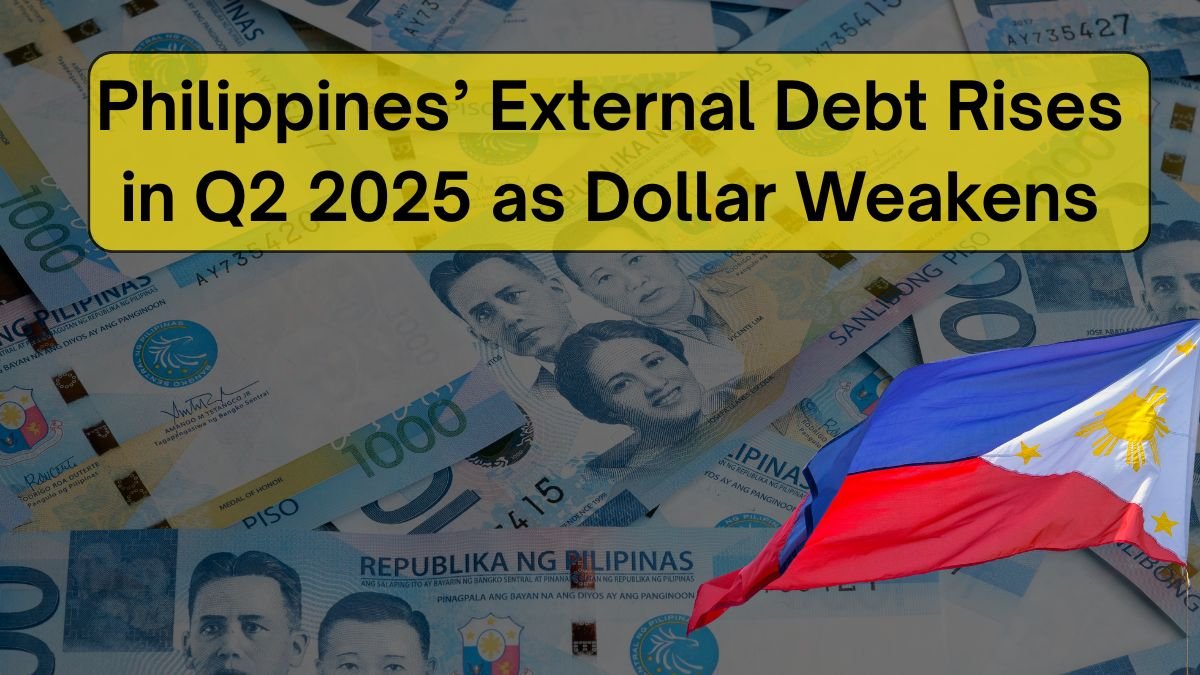Manila, Philippines — The Bangko Sentral ng Pilipinas (BSP) reported that the country’s external debt climbed in the second quarter of 2025, mainly due to a weaker US dollar that raised the value of borrowings in other currencies.
According to BSP data released Friday, foreign debt stood at $148.87 billion from April to June, up 1.5 percent from $146.74 billion in the first quarter. This was equivalent to 31.2 percent of the country’s GDP, slightly lower than the 31.5 percent ratio recorded earlier this year.
Why the Increase Happened
The central bank explained that the uptick came largely from valuation effects. As the US dollar depreciated, the value of loans denominated in other currencies increased by $1.49 billion.
Other factors also played a role:
- Net purchases of Philippine debt securities worth $660.96 million pushed external debt higher.
- Net repayments of $315.67 million provided only a small offset.
Despite the rise, the BSP stressed that the overall debt situation “remains sustainable.”
Debt Breakdow
Most of the country’s foreign obligations remain medium- to long-term loans, which accounted for $127.46 billion of the total.
By creditor type:
- Bond and noteholders held about $50.24 billion
- Multilateral lenders accounted for $39.97 billion
- Banks and financial institutions made up $33.35 billion
Japan continued to be the Philippines’ largest creditor at $15.6 billion, followed by the United Kingdom ($6.36 billion) and China ($4.76 billion).
Notably, over two-thirds ($106.45 billion) of the debt was still denominated in US dollars.
Year-on-Year Growth
Compared to the same period in 2024, external debt was 14.4 percent higher. The increase came mostly from new borrowings, including:
- $5.83 billion in bond sales by the national government
- $3.44 billion in foreign financing raised by local banks
Strong Reserve Position
As of end-June, the Philippines’ short-term external debt (remaining maturity) was estimated at $28.63 billion. This was more than covered by the country’s gross international reserves (GIR) of $106 billion, giving the Philippines a comfortable 3.7 times cover ratio.
The debt service ratio — which compares loan payments with export earnings and other inflows — fell to 8.7 percent from 9.8 percent a year earlier, reflecting lower interest and principal repayments.
Public vs Private Borrowing
- Public sector external debt rose to $94.8 billion by the end of June, compared to $91.54 billion in March.
- Private sector foreign obligations dipped slightly to $54.07 billion from $55.2 billion.
Takeaway
While the Philippines’ foreign debt stock edged higher in the second quarter of 2025, the BSP emphasized that the country’s reserves remain strong and debt levels manageable. The weaker dollar may have inflated the numbers, but repayment capacity indicators — such as GIR coverage and debt service ratio — continue to show resilience.



